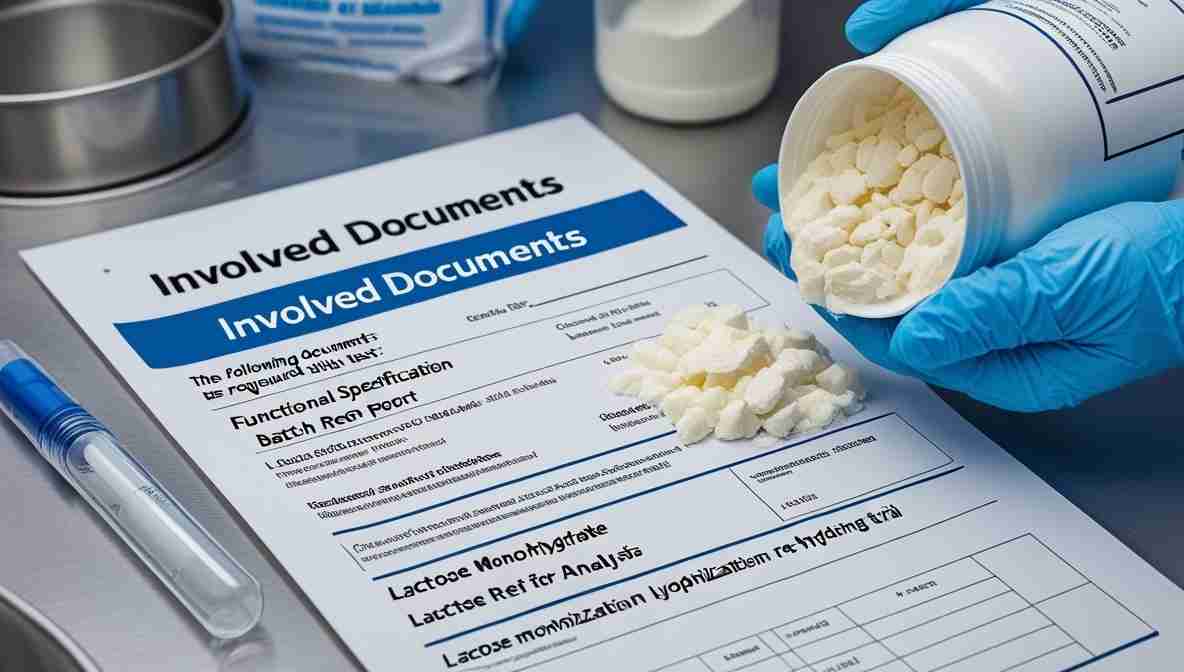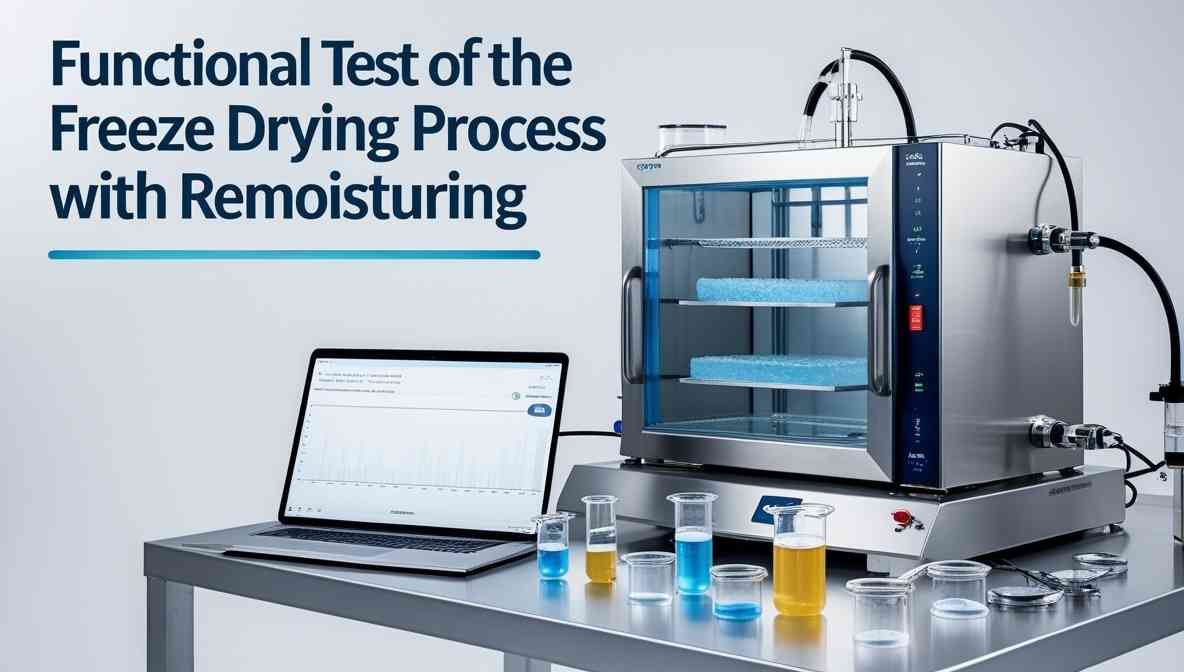Freeze-drying remoisturing test (freeze-drying, also known as lyophilization) is a critical process used in the pharmaceutical and food industries to preserve products by removing moisture while maintaining their structural integrity and effectiveness. The process involves freezing a substance, reducing the surrounding pressure, and then removing the ice by sublimation. However, after the freeze-drying process, some moisture is intentionally reintroduced to the product in a controlled manner—this is known as remoisturing.
Why is remoisturing important?
Remoisturing ensures that the product retains the necessary physical and chemical properties required for its intended use. In the case of pharmaceutical applications, precise moisture levels are essential for maintaining drug stability, solubility, and effectiveness. If remoisturing is not conducted correctly, it can lead to product degradation, poor reconstitution properties, or compromised quality.
Purpose of the Functional Test
The functional test of the freeze-drying process with remoisturing aims to verify that:
- The freeze-drying process is performed correctly without any deviations.
- The remoisturing process restores the required moisture level without affecting product quality.
- The refrigeration and drying systems function efficiently within the defined parameters.
- No SCADA system errors or failure messages impact the freeze-drying process.
- The final product meets the specified moisture content (4%–6%) for optimal stability and effectiveness.
This functional test is essential for ensuring product safety, compliance with industry standards, and regulatory approval. Proper documentation and verification of the remoisturing process are necessary for quality assurance in pharmaceutical manufacturing.
In the following sections, we will outline the required documents, equipment, test procedures, and acceptance criteria for conducting a successful remoisturing test in freeze-drying.
For more details on system leak detection in freeze-dryers, you can read our related article: Leak Detection in Freeze Dryers.
Purpose: The purpose of this test is to check if Functional Test of the Freeze-Drying Process with Remoisturing the process in freeze-drying works correctly.
Involved Documents

The following documents are required for this test:
- Functional Specification
- Batch Report
- Certificate of Analysis
- Lactose Monohydrate Lyophilization and Re-hydration Trial
If the “number of pages” column is empty, the listed documents must be attached to the qualification binder (see B Attachments). Mark the involved documents and printouts on the first page with a “Qualification Document” stamp.
Required Equipment and Tools
- Type of Equipment: Titrator
- Model/Version Number: (To be specified)
- Equipment No.: (To be specified)
- Calibration Valid Until: (To be specified)
Acceptance Criteria: The refrigeration system in the freeze-drying process must function correctly.
Test Implementation
- All instructions and requirements in the involved documents must be followed.
- The SCADA system should not display any failure messages. If a failure message appears, its impact on the test must be evaluated.
- The tester must have proper access to the freeze-drying unit and the SCADA system.
- The Lactose Monohydrate Lyophilization and Re-hydration Trial document should be used for test preparation.
For more insights on system leak detection in freeze-dryers, check our article: Leak Detection in Freeze Dryers.
Verifying the Freeze drying remoisturing test

Follow these steps:
- Enter the general parameters and freeze-drying recipes.
- Start the processes and monitor the conditions.
Key Parameters of Freeze drying remoisturing test
| Phase | Time | Temperature | Pressure |
|---|---|---|---|
| Loading | 1 min | 5°C | – |
| Freezing | 10 min | 5°C to -45°C | – |
| Primary Drying | 10 min | -45°C to 40°C | 0.133 to 0.067 mbar |
| Secondary Drying | 10 min | 40°C | 0.50 mbar |
| Unloading | 10 min | 25°C | 0.133 mbar |
After completing the freeze-drying process, remoisturing is verified using titration Methods and Acceptance Criteria: The remoisturing level should be between 4% and 6%.
Sample Test Results of Freeze drying remoisturing test
| Sample Location | Remoisturing (%) |
|---|---|
| Upper Front Vial | 4.85% |
| Upper Middle Vial | 5.16% |
| Upper Rear Vial | 4.92% |
| Upper Right Vial | 4.91% |
| Upper Left Vial | 4.93% |
| Lower Front Vial | 5.01% |
| Lower Middle Vial | 4.89% |
| Lower Rear Vial | 5.13% |
| Lower Right Vial | 5.02% |
| Lower Left Vial | 4.83% |
Average Remoisturing:4.97% and Test Result found satisfactory or Pass
Final Note: Uniform remoisturization will be tested during the Factory Acceptance Test (FAT). The remoisturing range should be within ±1% for all sample vials.
Conclusion of Freeze drying remoisturing test
The functional test of the freeze-drying process with remoisturing is essential for ensuring the quality, stability, and effectiveness of pharmaceutical and food products. By carefully monitoring the freeze-drying and remoisturing process, manufacturers can maintain optimal moisture levels (4%–6%), preventing product degradation and ensuring compliance with industry standards.
The test involves verifying key parameters such as temperature, pressure, and moisture levels while ensuring that no failure messages affect the process. The results of the test confirm that the refrigeration, drying, and remoisturing systems are functioning correctly.
Proper documentation, testing, and evaluation of the remoisturing process help manufacturers maintain product integrity, meet regulatory requirements, and improve the overall efficiency of freeze-drying operations.
For more insights on advanced freeze-drying techniques, read our detailed guide, Understanding Freeze-Drying Technology.
FAQs Related to Freeze drying remoisturing test
1. Why is remoisturing necessary in the freeze-drying process?
Remoisturing ensures that the product retains the required moisture level for stability, solubility, and effectiveness. In pharmaceutical products, the correct moisture level helps in proper reconstitution and prevents product degradation.
2. What happens if the remoisturing process is not performed correctly?
Incorrect remoisturing can lead to overly dry or excessively moist products, affecting their quality, texture, and functionality. In pharmaceuticals, this may result in poor dissolution, reduced potency, or product rejection.
3. What parameters are monitored during the functional test of freeze-drying?
The test monitors key parameters such as:
- Temperature range (from freezing to drying phases)
- Pressure levels (to ensure proper sublimation)
- Moisture content (to maintain the required 4%–6%)
- SCADA system failure messages (to detect any operational issues)
4. What equipment is used for verifying remoisturing in freeze-drying?
The primary equipment used for verification is a titrator, which measures the moisture content in the final product. Other tools include SCADA systems for monitoring process conditions and freeze dryers for sample preparation.
5. How do you determine if the test has passed or failed?
The test is considered successful if the final product’s moisture content falls between 4% and 6% and all parameters. Including temperature and pressure, meet the required criteria. If the results fall outside this range, adjustments may be required, and the test must be re-evaluated.
